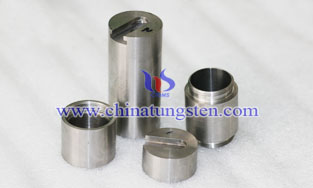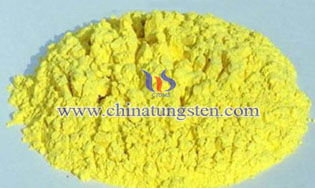Ken Chernin Shares Extraordinary Stories of Tungsten
- Details
- Category: Tungsten's News
- Published on Friday, 14 December 2012 16:56
- Hits: 2641
The Critical Metals Report: We're seeing bubbling interest in tungsten. Let's talk a little about their uses.
Ken Chernin: Tungsten is historically known as a "war metal" because it was primarily used in ballistics. Demand and pricing followed the historical path of conflict. In recent years, the biggest market has become something called cemented carbide. It is used primarily in specialty tools that need to withstand excessive heat and require extreme durability, like drill bits for oil and gas and mineral drilling. Right now, tungsten's demand is closely linked to gross domestic product, especially with China. The reason I like tungsten is I see it changing from a demand story to a supply story.
TCMR: Are you saying you see potential supply problems with tungsten?
KC: Yes, I do. Tungsten, when I first looked at it, read like a rare earth elements (REEs) story in that 86% of global supply came from China. In REEs, it's around 95%. The Chinese government seems determined to restrict exports because it has made a significant investment in downstream, higher-margin industries using tungsten. Therefore, it is determined to keep what resources it has for itself.
TCMR: Just like the REEs.
KC: Exactly. I found in my research that only three tungsten mines outside of China have operated without extended closures in the past 60 to 70 years. As a result, there was an enormous loss of tungsten-specific knowledge. Tungsten mining and processing is very unique. Today, companies with brownfield or greenfield projects will likely have trouble finding the right people.
Another dynamic is that the higher-grade deposits have been depleted. A large proportion of the new projects are very low grade. Some are 0.09% grades, which is approximately three times lower grade than some tailing recovery projects.
TCMR: China is suffering from all the environmental impact of its mining activities over the years. We certainly would like to see more attention paid to cleaner projects.
KC: Absolutely. That's a very good point. China has moved to close smaller, less efficient tungsten as well as fluorspar mines and has implemented policies aimed at consolidating both industries. That said, in late January 2012, the World Trade Organization (WTO) confirmed its findings from a mid-2011 decision that China's export restrictions on several industrial raw materials, which included fluorspar, were in breach of WTO rules. Although China claimed that the export restrictions on these industrial raw materials were justified for reasons of environmental protection or conservation policy, the WTO did not agree. The complaint was brought by the U.S., Mexico and the European Union. In March 2012, the U.S., the European Union and Japan launched a new WTO dispute against China's export quotas on tungsten, rare earths and molybdenum, and China is again citing environmental and sustainability concerns.
TCMR: Can North American tungsten investors participate in the tungsten story?
KC: Absolutely. We published a research report on Sept. 26 on three publicly traded producers. All tungsten investors is listed in Canada. They're all in production. Tungsten prices have dropped since a year ago to about $350 per metric ton unit (mtu) from $450/mtu (which is 10 kilograms). If we get another sudden spike, these companies benefit immediately. All three companies' contracts are tied to the market price of ammonium paratungstate (APT), which is the main tungsten intermediate.
North American Tungsten is the largest tungsten mine outside of China and the only tungsten mine in North America, so it has strategic importance. However, in my mind, its remote location presents a challenge. I refer to the company as somewhat of a swing producer, as it has been closed in the past owing to low tungsten prices.
TCMR: So, it can essentially come along as the commodity price increases?
KC: Yes, the majority of the operation's costs are fixed so there is leverage there.
TCMR: Spain seems to be a reasonable place to have a mine in terms of jurisdictional risk, infrastructure and support.
KC: Very true. Right now, the mine is running off diesel generators, but the operation is only about seven kilometers from a power substation. Last time I spoke to the company, it was in the process of acquiring the necessary permits to install the power lines. The next step would be putting in the last flotation circuit. The company's stated goal is to achieve recoveries of 65% by the end of the calendar year. Looking at this team and what they've done so far with just putting in a hydrosizer, I believe we're going to see 75–76% recoveries. The cost per mtu has already decreased, and the company is just getting going. Next, it is looking at optimizing the mine, which is open pit.
It's impressive. I was quite impressed with Lewis Black and the chief financial officer (CFO). There is not a lot of information on tungsten out there and Black obviously knows this metal. From Panasqueira, he has put together a team with considerable experience working with tungsten. His team has essentially outlined the optimization of Los Santos in 10 months. Essentially, all Almonty has to do is install the flotation circuit and then optimize the pit.
The company is also looking for acquisitions. We believe that Almonty has aspirations of becoming a global tungsten story.
TCMR: Tell us a little about Malaga.
KC: The Malaga deposit is interesting because there are two different types of commercial tungsten deposits. One is scheelite, which Almonty and North American Tungsten have. The other is wolframite, which is what Malaga is currently mining. Wolframite is much easier to work with and adequate recoveries are achieved with the gravity tables coupled with magnetic separation; flotation is not necessary. The other thing that's really interesting about Malaga, aside from being one of only a few wolframite mines in the Western world, is that it has a 49% interest in a hydroelectricity plant that currently provides approximately 70% of the mine's power demand, with the remaining power coming from the national grid. For these reasons, it is the lowest-cost tungsten concentrate producer of all the publicly traded tungsten companies.
Management recently changed about a year ago. The new CFO, Pierre Monet, has recently started the construction of a tailings recovery pilot plant. This is interesting because it is partially funded by Global Tungsten & Powders Corp. (private), with which it has an offtake agreement. If the company achieves its targeted 50% recovery rate, we estimate that the tailings recovery could increase the company's total tungsten concentrate production by about 14% and reduce cash costs per mtu by about 7%.
TCMR: This would be an interesting one.
KC: It is interesting. The project is Pasto Bueno, which means "good ground." The mine has been in existence since 1910. If the pilot plant works, management is going to install additional similar screens into its main processing facility. If the installation of these screens meet management's expectations, it may be able to boost recoveries by about 5%, which would put it up to about 80%. This would be meaningful for its cost per mtu.
Very little exploration work has been done on the property. What exploration has been done was always focused on the north end of the project. Malaga's new CEO drilled a few holes in the southern portion and discovered a scheelite deposit. The grades thus far look to be encouraging. It has potential to be a high-grade and sizable new tungsten project with excellent infrastructure that is very close to the existing mine. That's very unique.
TCMR: What can you tell us about North American Tungsten, since it's really the only North American tungsten outfit?
KC: It has two projects. Cantung has been in operation since the 1960s.
TCMR: Is it currently producing?
KC: Yes, in fact it is the largest producing tungsten mine in the Western world. Its production in 2011 was approximately 224 thousand mtu (Kmtu), whereas Malaga's was approximately 55 Kmtu and Almonty's was approximately 65 Kmtu when it was owned and operated by Heemskirk Consolidated Ltd. (HSK:ASX). It has a compelling valuation. It's trading at about 50% of our net present value estimate. Again, it's a high-cost operation on the back of logistic challenges. It has good recoveries and high grades.
How this operation is run is encouraging, but there are a couple of issues: the diesel and labor. There is one road in, one road out, which was washed out in June 2012 and resulted in operations being suspended for almost two weeks. I believe that this is indicative of the challenges management faces due to the project's remote location. Workers are flown in and out, and the mine is virtually competing with every mine in Northern Canada for workers.
Ken Chernin has been an equity research analyst with Jennings Capital since November 2008. Prior to joining Jennings, Chernin was a special situations analyst at an Atlantic Canadian investment dealer, where he focused on Atlantic Canadian oil and gas, utility, food retail and real estate companies. He also worked as a research associate for a Toronto-based brokerage firm and in risk management for a Canadian funds management firm. He has corporate governance experience with the Clarkson Centre for Business Ethics and Board Effectiveness at the University of Toronto and the Canadian Coalition for Good Governance. Chernin holds a Master of Business Administration from the Rotman School of Management at the University of Toronto and a Bachelor's in communication from Saint Mary's University, Halifax.








 sales@chinatungsten.com
sales@chinatungsten.com